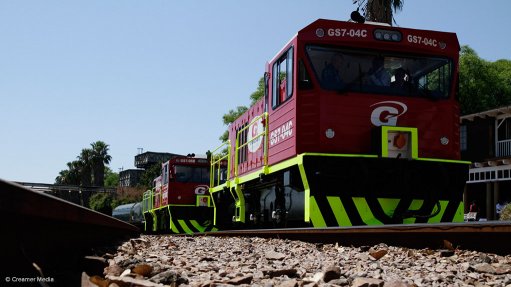
Photo by: Duane Daws
Freight services and shipping group Grindrod on Friday reported a 2% increase in headline earnings, to R328-million, for the six months ended June 30, compared with the same period last year.
Revenue, inclusive of joint ventures, increased by 4%, to R14.4-billion, with trading profit, again inclusive of joint ventures, stable at R943-million.
Grindrod CEO Alan Olivier said in Johannesburg on Friday that the company’s operations had been challenged by the slow global economy, as well as the downturn in the commodity market, which had placed “commodity prices under significant pressure”.
Lower oil prices, however, had resulted in good earnings for the group’s tanker fleet, as the demand for oil tankers had been exceeding global fleet capacity as oil consumption grew.
The same was not true for the dry-bulk shipping market, weakened in part by oversupplied tonnage. This market presented a challenge to the group, with rates remaining well below the cost base.
Olivier said global dry-bulk seaborne trade was likely to grow significantly slower than previously expected.
“This shows you the state of the commodity market at the moment. Dry-bulk shop owners are in trouble, with ships not covering their operational costs. Some shipyards are also distressed.”
The global compound annual growth rate in dry-bulk seaborne trade expected over the next three years was 3.6%, down from 5.1% as stated in February.
Weak commodity prices also affected volume through Grindrod’s mineral terminals, despite good support from corridor partners.
The movement of dry-bulk tonnage through the group’s terminals dropped by 32% for the six months under review, to 4-million tons.
The Maputo car terminal also saw volumes decline, by 41.7%, to 17 063 vehicles.
Olivier attributed this drop to the state of the local and regional vehicle market, adding that “there was a big push” to recover vehicle volumes at the terminal.
Financial close on the $100-million Port of Maputo dredge project was expected in the fourth quarter of 2015, added Olivier.
“We are in the process of adjudicating tenders.”
The dredge would see the port cater for fully-laden Panamax vessels with a draft of 14.2 m, resulting in increased competitiveness.
The R125-million Richards Bay coal terminal expansion to 4.5-million tons a year should be complete in the first quarter of 2016.
Regulatory delays on the Coega liquid-bulk terminal development had delayed construction on this project, with kick-off expected in the first quarter next year, said Oliver.
Weaker commodity prices also impacted Grindrod’s rail businesses negatively, but this was partially offset by an order for 18 locomotives, to be delivered over a two-year period, starting at the end of this year.
Grindrod’s rail construction and signalling businesses were suffering from project delays, noted Olivier.
The group’s agricultural logistics business, following a bumper crop in the prior year, could not escape the impact of this year’s droughts, he added.
Looking ahead, Olivier said Grindrod would continue to grow the business to become a fully integrated freight and logistics service provider, with a specific focus on Africa.
However, a continued increase in demand for commodities was a key driver of the company’s business model, and Grindrod would benefit greatly from improved dry-bulk shipping rates and increased commodity prices.